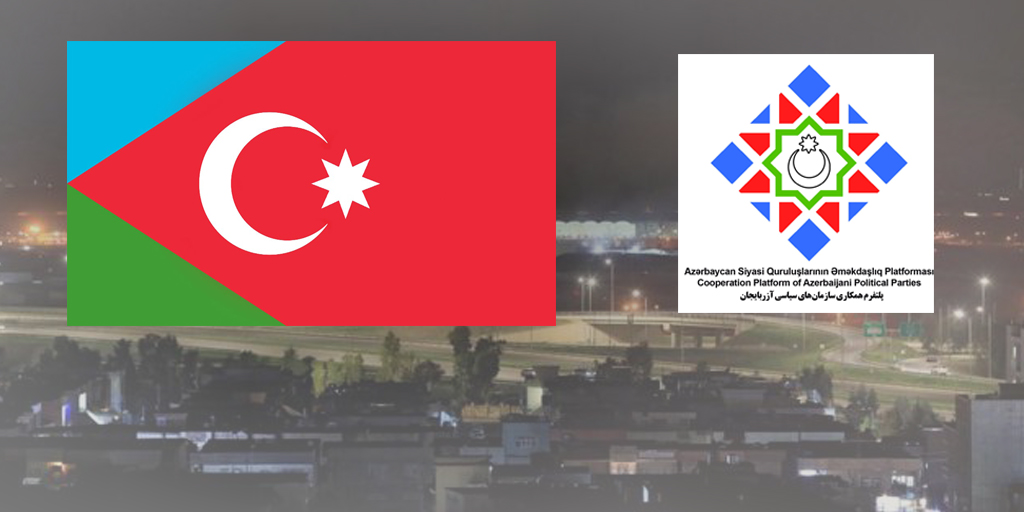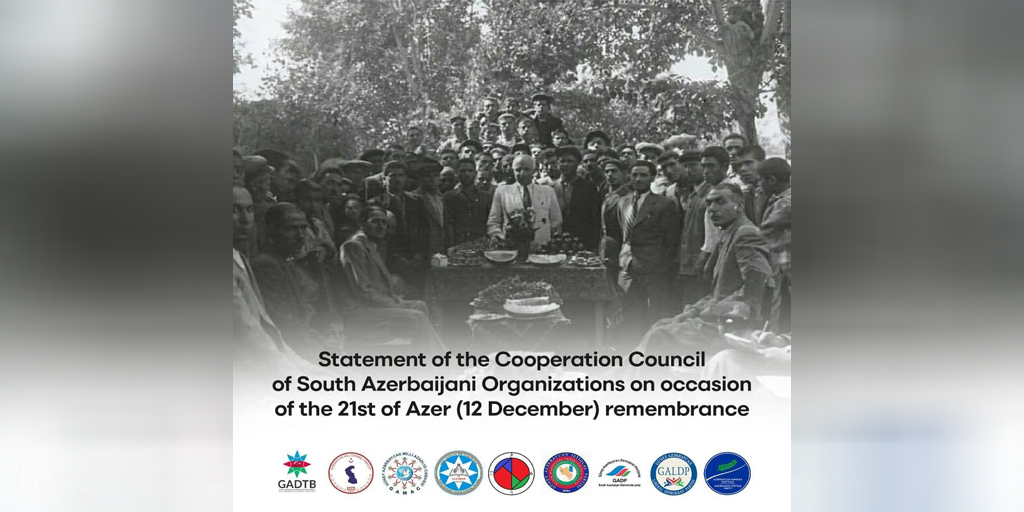The Southern Azerbaijan Question And Its Implications For Iranian National Identity

Author: Alberto Priego
Since the establishment of the Republic of Azerbaijan after the collapse of the Soviet Union, Azerbaijanis living in Iran have developed a stronger ethno-national identity, and that development has affected Tehran’s domestic and foreign policies. Most immediately, it has had an impact on Tehran’s policies in the South Caucasus, shifting Iran from a position of quiet neutrality in Soviet times to more active support of Armenia against Azerbaijan in the Nagorno-Karabakh conflict lest an irredentist movement arise within Iran (Shaffer 2004).
Throughout much of modern history, the territories of Northern and Southern Azerbaijan were part of the Iranian empire, but in the early 19th century, as a result of two wars between Iran and Russia, historical Azerbaijan was divided between north and south by the treaties of Gulistan (1813) and Turkmenchay (1828) (Shaffer 2002). Since that time, the two Azerbaijans have developed along very different paths. In the north, Russia promoted the development of the oil and gas fields and the growth of Baku as an urban center, whereas Iran did little to transform the traditionalist, rural, and agricultural society of the south.
Western ideas like liberalism, nationalism or secularism came to Baku early on, and Southern Azerbaijanis who came north to work were affected by those ideas as well, with the two sides developing a sense of common identity and solidarity. The northerners wanted to share their wealth and their ideas, and the southerners responded with solidarity when violence broke out between Azerbaijanis and Armenians a century ago (Laçiner and Demirtepe 2004, p. 444).
A consequence of this was the emergence of the idea of a single Azerbaijan, especially among northerners who were heavily influenced by the Young Turks and exported this idea to the south. Intellectuals like Huseyinzade or Agaoglu, for example, promoted the idea of an Azerbaijani State unifying northern and southern territories. And by the start of the 20th century, newspapers in Tabriz began publishing articles promoting the idea of “One Azerbaijan” (Atabaki 2005, p. 33).
These ideas attracted greater attention following the collapse of the tsarist empire and the emergence of the Azerbaijan Democratic Republic in 1918. And during the short period of that state’s existence (1918-1920) (Altstadt 1992, p. 65), Northern and Southern Azerbaijanis expanded their contacts and promoted this idea. Needless to say, neither Russia nor Iran approved of this, and the dream of a single Greater Azerbaijan ended with the intervention of the Red Army in the North and the application by the shah of a harsh policy of assimilation in the South (Ismayilov 2008).
In the 20th century, Southern Azerbaijan was one of the most unstable regions of Iran. Three revolts in particular were especially important: The first, led by Azerbaijani activist Sheykh Mahammad Khiyabani, sought the decentralization of Iran rather than its break-up. But despite that, Tehran feared that he would ultimately follow the example of the North and crushed his revolt, killing 50 people, including Khiyabani.
The second, known as Pishevari’s revolt, after the name of its leader, demanded national self-determination, independence and the introduction of Soviet-style communism. It did not gain much support because most Azerbaijanis did not trust Moscow; they preferred greater autonomy within Iran rather than a nominally independent state controlled by Moscow. And in December 1946, the Iranian army entered Northern Iran and quickly restored Tehran’s control following the withdrawal of Soviet forces which had been there during World War II.
And the third period of instability occurred at the time of the Islamic revolution. At the time of its outbreak, Iranian Azerbaijanis occupied important economic positions in both Tabriz and Tehran, but the shah refused to recognize their separate identity. Consequently, many Azerbaijanis in the south opposed him, but they soon discovered that Ayatollah Khomeini opposed them as well, and so they found themselves excluded even though Ayatollah Shariatmadari, the Azerbaijani religious leader, supported some of their demands.
The establishment of the Republic of Azerbaijan in 1991 triggered an Azerbaijani national revival in Northern Iran. Until then, most of the southern population identified themselves as Turkic but after that, they preferred to be called Azerbaijanis or Azeris. In the Majlis, deputies of Azerbaijani origin sought to defend their language and cultural rights, and for the same reason some intellectuals began to write in the Azerbaijani language instead of Persian. A few newspapers in Azerbaijani appeared, especially in Tabriz, and alongside this cultural revival, several transport routes between Iran and Azerbaijan were inaugurated to connect these two populations.
This intensification of national identity generated fears in Tehran because one of every four Iranian citizens is an ethnic Azerbaijani, something that could under certain conditions threaten the territorial integrity of the state. And because of that possibility, Tehran changed course in the Caucasus, shifting from a balanced approach on Nagorno-Karabakh to an open tilt toward Armenia (Priego 2005, p. 9) and to closer ties with the Russian Federation. One indication of this tilt is that Armenia was able to open an embassy in Tehran already in 1992 whereas Azerbaijan had to wait until 2004 to open a consulate in Tabriz.
Because of its fears about irredentism, Tehran frequently accuses Baku and Washington of provoking revolts in its northern provinces. In one infamous case, an Iranian cartoon portrayed Azerbaijanis as cockroaches, something that provoked demonstrations in Tabriz and other Azerbaijani areas. After that, the Iranian government decided to close the journal, although its officials continued to blame Washington and Baku for the rallies. And they noted that a New Yorker article by Seymour Hersh (2006) had suggested that American forces in the region had some contact with discontented Azerbaijanis within Iran. In addition to lashing out at the Americans, Tehran has sought to influence Baku through their common Shiite faith. And Baku in response has blamed Tehran for financing Islamist movements like the Islamic Party of Azerbaijan, Jeysullah and branches of Hezbollah.
As the existence of the Southern Azerbaijan issue shows, Iran remains a multi-ethnic state, something that on occasion has forced it to pursue a more inclusive policy toward its minorities but often has simply led to more Iranian persecution of these non-Persian groups. Given Azerbaijan’s prosperity, the existence of an Azerbaijani minority within Iran is considered by most Iranian officials as especially threatening, all the more so because Southern Azerbaijan is one of the richest provinces in Iran. But the current crackdown reflecting Tehran’s fears appears likely to provoke more Azerbaijani nationalism in the south rather than lead to the integration of this community.
References
Altstadt, Audrey (1992) The Azerbaijani Turks: Power and Identity Under Russian Rule, Hoover Institution Press.
Atabaki, Touraj (2005) ‘Ethnic Diversity and Territorial Integrity of Iran: Domestic Harmony and Regional Challenges’, Iranian Studies, Vol. 38, No. 1, March 25, pp. 23-44.
Hersh, Seymour (2006) ‘The Iran Plans’, The New Yorker, April 17, available at http://www.newyorker.com/printables/fact/060417fa_fact (accessed March 20, 2009).
Ismayilov, Murad (2008) ‘Azerbaijan National Identity and Baku’s Foreign Policy: The Current Debate’, Azerbaijan in the World, Azerbaijan Diplomatic Academy, Vol. I, Issue 1, February 1, available at http://www.ada.edu.az/biweekly (accessed March 20, 2009).
Laçiner, Sedat and Turgut Demirtepe (2004) ‘Nationalism as an Instrument in a Socialist Foreign Policy: The Southern Azerbaijan Problem in Soviet-Iranian Relations’, The Review Of International Affairs, Vol. 3, No. 3, March, pp. 443-457.
Priego, Alberto (2005) ‘The Creation of the Azerbaijani Identity and Its Influence on Foreign Policy’, UNISCI Discussion Papers, Universidad Complutense de Madrid.
Shaffer, Brenda (2002) Borders and Brethren: Iran and the Challenge of Azerbaijani Identity, Cambridge, MA: The MIT Press.
Shaffer, Brenda “Iran’s Internal Azerbaijani Challenge: Implications for Policy In the Caucasus”, in Gammer, Moshe, edt. (2004) The Caspian Region. A Re-emerging Region, Vol. I, London: Routledge, pp. 119-140.


























